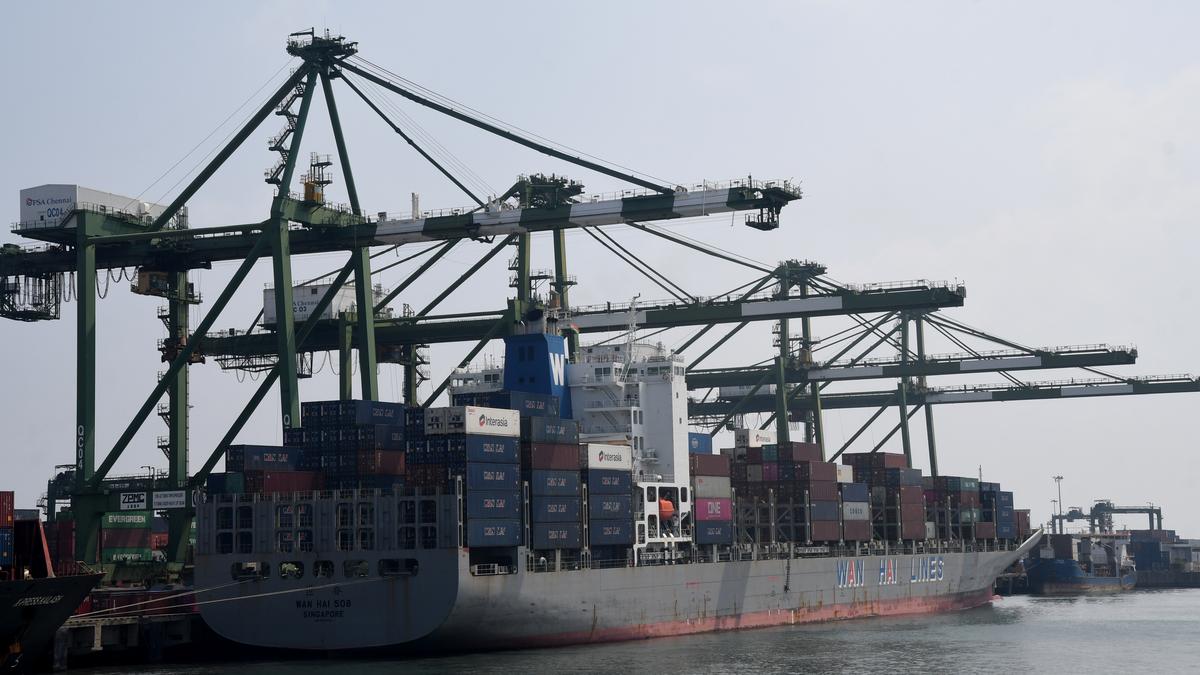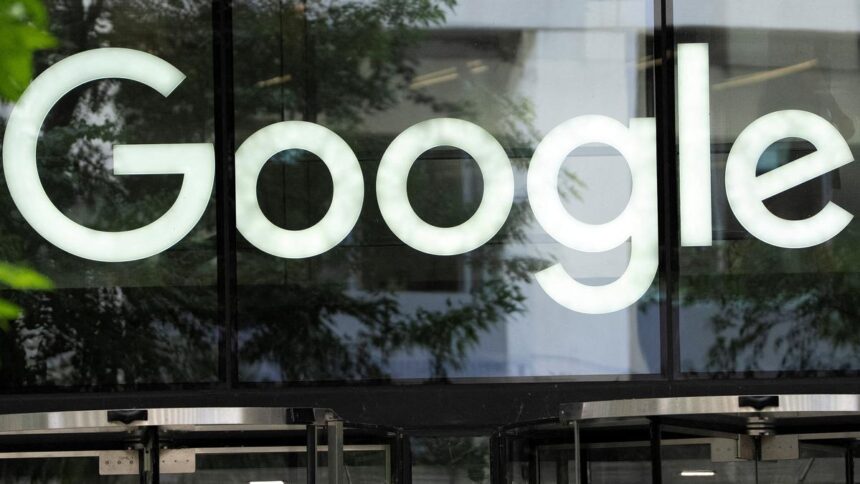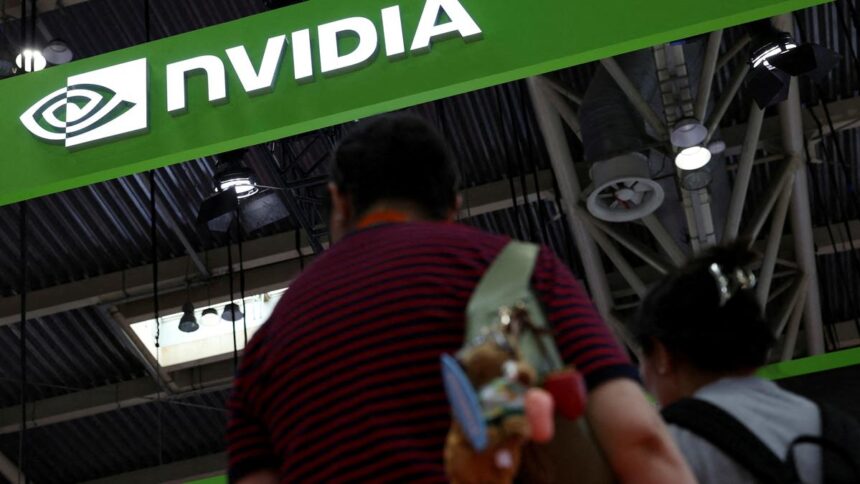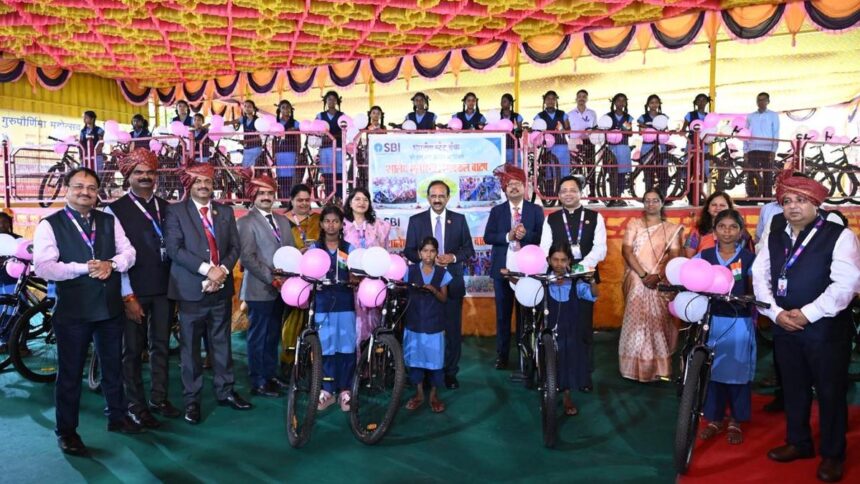
Cargo shipping containers are loaded with cranes on container ships at the Port Trust container terminal, in Chennai.
| Photo Credit: JOTHI RAMALINGAM B
The story so far: Global shipping is on course towards decarbonisation by 2040-50. This represents a huge opportunity for India. Merchant ships largely use Very Low Sulphur Fuel Oil (VLSFO), diesel, and methane gas stored in liquid form as fuel. LNG-powered engines with their higher efficiency of some five percentage points are likely to be a transition fuel before shipping moves to green fuels such as green ammonia, green or e-methanol and biofuels by 2040 and net zero thereon.
How are green fuels produced?
Green hydrogen is made from the electrolysis of water using renewable power. Shipping will not use hydrogen directly because of issues with storage and transportation of hydrogen, a highly volatile fuel. Green ammonia, made from green hydrogen and nitrogen, is more stable. The government is also encouraging green ammonia production in India since it can substitute LNG imports in making fertilizers. Green methanol is made from green hydrogen and carbon dioxide obtained from industrial sources.
What are the preferred fuels?
Shipping, however, is generally a conservative industry. New technology adoption is relatively slow. Ammonia engines are a novelty, so shipping is going first for green methanol, which emits some 10% of carbon dioxide, and later green ammonia, which emits no greenhouse gas. However, ammonia use requires extensive processes onboard. Besides a storage tank and tweaks to the engine and fuel handling system, green methanol is almost a drop-in replacement for VLSFO and is stored as liquid in ambient temperature unlike green ammonia or even LNG.
Already, more than 360 ships capable of operating on methanol are either in service or in order. Major container shipping companies such as Maersk, CMA, CGM and Evergreen are backing methanol. A 100% sustainable e-methanol as bunker fuel costs $1,950 per tonne (of VLSFO equivalent) in February in Singapore, while VLSFO averaged at $560 per tonne. This pricing discrepancy is primarily caused by the present price of renewable electricity, with every tonne of green e-methanol using 10-11 MWh of power, and the heavy upfront capital cost for electrolyser facilities. Estimates suggest that demand for green methanol would surpass 14 million tonnes by 2028, whereas the projected supply is merely in the order of 11 million tonnes, creating additional price pressures.
What is Indian shipping’s decarbonisation plans?
India has committed to decarbonising its domestic shipping. Plans have been made for supporting domestic container ships using green fuels as well as creating green fuel bunkering points such as at the Tuticorin V.O. Chidambaranar port and Kandla. The government is looking at producing and supplying green fuels to Singapore, which is a fuelling station accounting for nearly one-fourth of all global ship fuelling. Singapore has committed to being a green fuels supplier and would require therefore tens of millions of tonnes of green fuels. Given that India has the land and expertise for solar power, it can aspire to be a major supplier of green fuels to global shipping.
How can India do it?
Making a marine green fuels production hub has some challenges. Solar panels and electrolysers to make green hydrogen need to be imported. India’s solar energy revolution, however, is a model of how sovereign guarantees and policy strategic frameworks can drive the adoption of green fuels. From 2014 to 2025, India’s solar capacity grew from 2.82 GW to 105 GW. This achievement was made through the convergence of sovereign guarantees, off-take assurance, and strengthened supply chain support. Sovereign guarantees have emerged as a powerful de-risking mechanism for green methanol investments that can considerably reduce prices. These government-backed assurances can fundamentally transform project economics by enabling access to international capital markets at significantly lower interest rates.
Innovative financial instruments are needed for an at to scale green methanol rollout. Production-linked incentive (PLI) schemes for electrolysers can relieve supply chain bottlenecks by territorialising value chains and lessening transportation costs of raw materials. Carbon capture, utilisation, and storage (CCUS) incentives are also essential, as they increase the feasibility of the production of green methanol from sequestered CO2. Further, the government’s aggressive push in creating 1.5 GW of local electrolyser manufacturing capacity and growing industrial CO2 sources (from steel and cement industries) positions India strategically to develop integrated green fuel hubs. Multilateral development banks offer financing at rates as low as 4%, as opposed to 11-12% by domestic lenders, and they can be leveraged.
How can green fuels help restart Indian shipowning and shipbuilding?
The government’s move to inject demand-side support for shipbuilders, along with incentives for foreign cooperation, should spur economies of scale and attract global shipbuilders to the country. Partnerships with overseas shipbuilders from South Korea and Japan are being pursued to support India’s shipbuilding strength. The strategy is to support new builds and retrofit current ships for green fuel compatibility. India has pledged $10 billion to support the purchase of over 110 ships. Government can provide incentives so 10-20% of these are green fuel-capable, built in Indian shipyards, and are Indian-flagged.
Published – July 16, 2025 08:30 am IST























